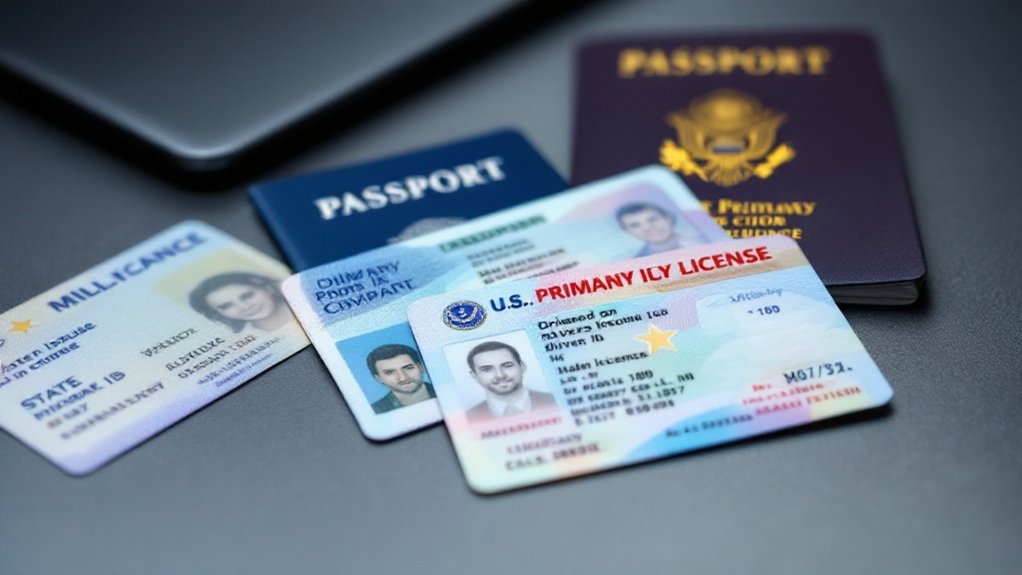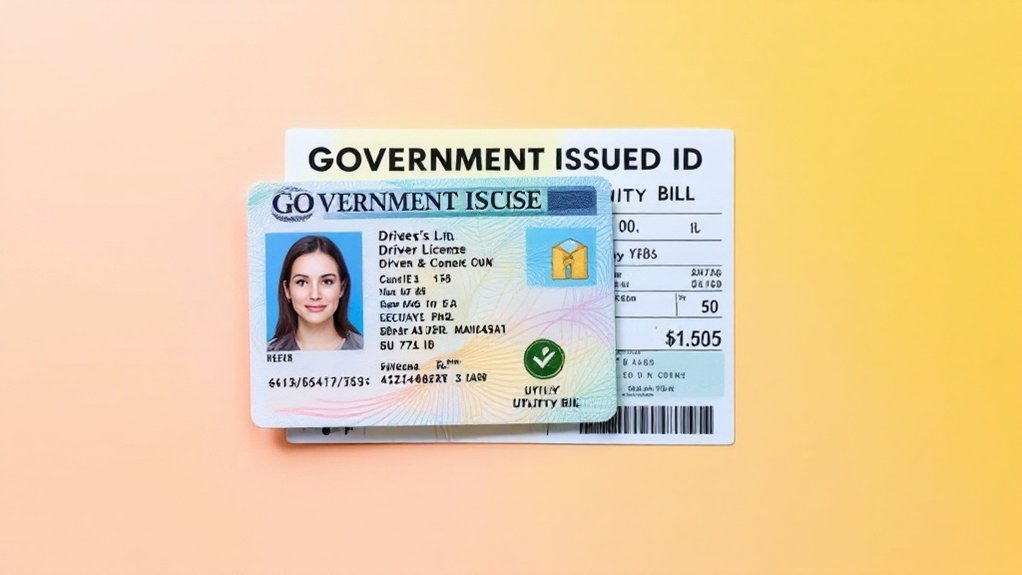When attending a fingerprinting appointment, you’ll need reliable photo IDs. A state-issued driver’s license, a state-issued non-driver ID card, and a U.S. passport are the best options. These documents are widely accepted and provide necessary identity verification. They must be issued by a credible authority, be up-to-date, and include your full name, date of birth, and photo. For more detailed information on ID requirements and best practices, you can explore further.
Primary Photo Identification Options

When attending a fingerprinting appointment, you’ll need a reliable form of photo identification. Primary options include state-issued documents like driver’s licenses and non-driver identity cards. Federal government documents such as U.S. passports and military IDs are also accepted. Additionally, tribal and military documents, including Native American Tribal ID Cards and Uniformed Services Identification Cards, are valid. For international purposes, foreign passports and residency documents like Permanent Resident Cards are recognized. These IDs guarantee your identity is verified securely during the fingerprinting process. It is important to ensure that the identification used is up-to-date and issued by a credible authority, as this can impact the validity of the ID for official purposes.
Secondary Identification for Verification
To guarantee a smooth fingerprinting process, you’ll need to bring secondary identification documents that complement your primary photo ID. Common secondary IDs include a birth certificate, Social Security card, and utility bill, which must contain your name and current address. A marriage certificate can also provide additional verification. When using secondary IDs, make certain they are original documents and not copies. You may need to combine a secondary ID with a primary one for fingerprinting appointments. Supporting documents like paycheck stubs or vehicle registrations can further validate your secondary IDs.
Requirements and Best Practices for Fingerprinting IDs**

For fingerprinting appointments, you’ll need a valid government-issued photo ID, such as a driver’s license or passport. Acceptable primary IDs also include military IDs and foreign passports. Guarantee your ID is unexpired, though some expired IDs up to two years old may be accepted. The ID must include your full name, date of birth, and a photograph.
To prepare effectively, schedule your appointment 2-3 weeks in advance and arrive 10-15 minutes early with all documents ready. Keep your hands clean and moisturized but avoid lotions on the day of the appointment. Wear comfortable clothing with easily rollable sleeves to verify a smooth process.
Conclusion
When heading to a fingerprinting appointment, you’ll need reliable photo IDs. Primary options include a driver’s license, passport, or state ID. For secondary verification, documents like utility bills or a Social Security card can be used. What’s the most secure way to verify your identity? Guarantee your IDs are valid and government-issued to avoid delays.

